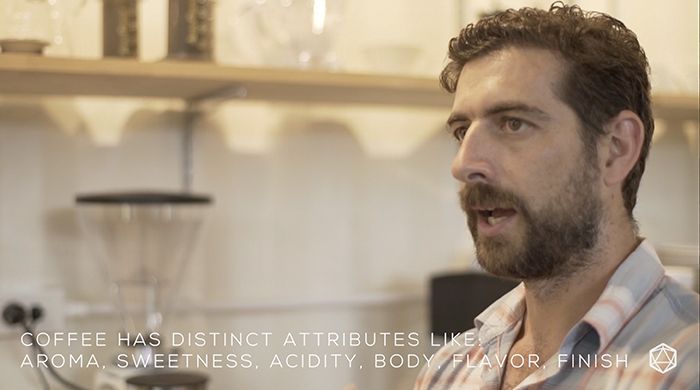Blueberry? Hazelnut? Grapefruit??
Coffee is one of the most diverse drinks in the world (we’d like to think, maybe even the universe!). With countless preparation and brew methods, and having over 2000 flavor descriptors (while wine has approximately 800), there’s a reason coffee is called the ‘drink of 1000 flavors’.
You might think that you need to be a professional sensory expert to tap into your coffee’s full potential. But that’s definitely not the case!
We met with our good friend Luke, founder of &Bloss Roastery and an international coffee sensory trainer, roaster, and passionate coffee lover to get his advice about how ANYONE can improve your sense of taste and develop your palate.
Find out how in the video!
The way you train your taste buds is actually a super easy (and fun!) process. It’s just like practicing a sport or learning to play an instrument–only instead heavy lifting, you get to drink lots of coffee!
- Drink lots of coffee! – Practice makes perfect. You can’t get better at tasting coffee unless you drink more coffee. Not a bad way to learn 🙂
- Try different types of coffee – The more variety in your coffee selection (especially if they’re very different from each other) the more you’ll be able to start detecting nuances. This includes trying coffee from different origins, processing methods, and roast profiles.
- Drink single origin coffees – Rather than blends which can have a combination of many flavors, single origins makes it easier for you to get to the “root” of the flavors.
- Know what you’re drinking – Learn about the flavor notes of your coffee by reading the coffee bag or asking the barista at the cafe, this helps to give you an idea of what to expect so you can have a reference point for what you’re tasting. The more you try “blueberry” the better you’ll become at recognizing it.
- Know and understand the language to describe coffee – A good place to start: aroma, sweetness, body, flavor, acidity, and finish. This will make it easy for you to first recognize, then describe what you’re experiencing.
- Bonus: use a flavor wheel – a flavor wheel will give you an overview of all the different flavor notes in coffee. When you compare this to the coffees you’re drinking, you’ll be able to start detecting more nuances with practice.

Happy coffee drinking!



No Comments